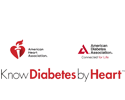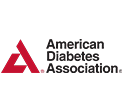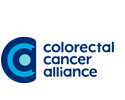Are You Ready to Help Stop Cervical Cancer?
National patient advocacy organizations and allies are urging American women to start the year off right by learning more about cervical cancer and prevention during Cervical Health Awareness Month this January. Here’s what you need to know.
Although enormous strides have been made in the prevention of cervical cancer – which has gone from being the number-one cause of cancer death among American women in the 1950s to now ranking 14th for all cancers impacting U.S. women – much work remains in the fight to end this disease. Cervical cancer is still a major health concern, with approximately 12,000 women diagnosed each year in the United States and more than 4,000 women who die from the disease annually.
Cervical cancer is primarily caused by the human papillomavirus (HPV), the most common sexually transmitted virus in the U.S. impacting 79 million Americans. While HPV is most often the cause, other identified risk factors can include:
- Smoking;
- Having HIV or other conditions that weaken the immune system;
- Prolonged (five or more years) use of birth control;
- Three or more full-term pregnancies; and
- Having several or more sexual partners.
While many of these factors don’t always lead to cervical cancer, it’s been shown that the risk of acquiring the disease can be decreased through frequent screening. Once women began regularly getting Pap tests and HPV vaccinations, for example, deaths resulting from cervical cancer decreased by nearly 70 percent in the United States from 1955-1992.
Cervical cancer is preventable because of the availability of a vaccine for HPV and effective screening tests, according to an announcement from the Centers for Disease Control and Prevention (CDC) of Cervical Cancer Awareness Month last year. Although highly treatable, the CDC shows that half of all cervical cancer cases occur in women who rarely or never were screened for cancer. In another 10-20 percent of cases, patients were screened but did not receive adequate follow-up care. The CDC has also issued information regarding the availability and importance of preventative HPV vaccines.
The National Cervical Cancer Coalition (NCCC) and the American Sexual Health Association (ASHA) also advocate for increased awareness of the disease. In its promotion of the event the NCCC provides numerous suggestions on how to spread the word, including:
- Enlist radio stations to issue PSAs;
- Share tweets and Facebook posts to educate their networks;
- Distribute ASHA/NCCC’s news release to local media, with a guide on how to reach out to media networks; and
- Write to their mayors or local legislative offices to recognize Cervical Health Awareness Month.
It’s also important for providers to know how to most effectively engage families with girls, according to ASHA/NCCC President and CEO Lynn B. Barclay.
“Only about 35 percent of girls and young women who are eligible for these vaccines have completed the three-dose series,” Barclay says. “Parents are strongly influenced by the recommendations of the family doctor or nurse, so we’ll continue developing cervical cancer information and counseling tools designed specifically for health professionals.“
Now we want to hear from you. How can you increase awareness about cervical cancer in your communities? What can organizations, places of employment and other stakeholders do to help heighten visibility around cervical cancer prevention strategies?
Editorial Note: At press time, information regarding expected estimates of cervical cancer rates in the U.S. for 2014 had not been released. Please note that we will include the latest statistics as soon as data becomes available.



















